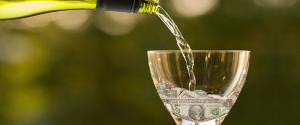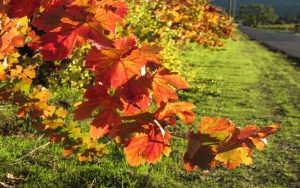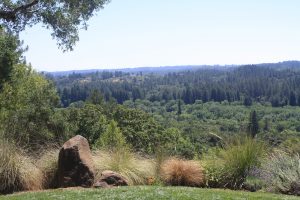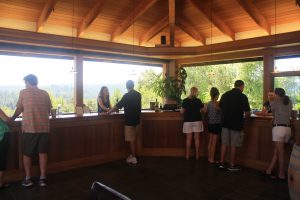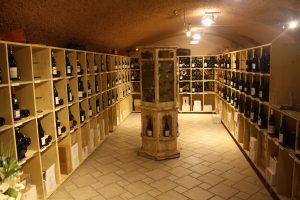Wine tasting, at least in California’s prime winemaking regions, has become an expensive pastime. What winemakers once – a long time ago – considered a form of marketing has become a profitable sideline for the wineries themselves. We’ve heard that Napa Valley is America’s number one adult tourist destination (we can’t vouch for that) but we can say that the roads and tasting rooms in Napa Valley and Sonoma County are more crowded than ever.
Photo courtesy of Cal Alumni Association
Along with these trends, the cost of tasting wines at the wineries has risen dramatically. For some of the more renowned wines, a charge of $40 or more is no longer unusual. It is commonplace to find a $25 fee for tasting from a winery’s reserve list. There are people who neither want nor can afford to pay those prices. Perhaps they are just looking for a pleasant day in the country, with a picnic and a little wine tasting to add zest to the day. For them, paying top dollar for a few sips just doesn’t make sense.
We have long advocated tasting the best wines when visiting Wine Country, because they provide the maximum pleasure. But for those who would also like to have the maximum value without paying the maximum price, here are some ideas for attaining that double goal.
- Look for wineries that offer free tastings. Yes, there are still some. The most famous and by far the best is Heitz Cellars. Joe Heitz, one of Napa Valley’s pioneers, never wavered from his goal of making great wine accessible and his winery still offers tastings without charge. Don’t miss this one. A few others, such as Buehler, Sutter Home and Vincent Arroyo are also still free of fees.
- Do a little homework in advance. Figure out what sector you would like to visit, keeping thoughts of where you can picnic in mind. For a variety of legal reasons, picnicking is much easier to do in Sonoma County than in Napa County. Check web sites to learn if you can bring food. And then check the cost of tastings. There are still some bargains around.
- Buy a bottle. In many cases, if you buy a bottle of wine, the winery will waive the tasting fee. So a bottle of wine to accompany that picnic may make for a free tasting. And of course, you can take a bottle home with you for another time.
- Share your tastings. If your objective is tasting, not drinking, two people can share a single tasting, thereby bringing down the cost. We do it all the time, not so much for money reasons as to manage our intake of alcohol. That way you might be able to splurge a bit on a pricier winery.
- Try the less costly list. There’s no rule that says you only have to try only the reserve list. And in fact we have found that in some cases, there’s no particular advantage to a winery’s most expensive wines. You’ll find some pretty nice wines at places like Beaulieu Vineyards and Chateau St. Jean in their regular tasting rooms, as opposed to their reserve rooms.
